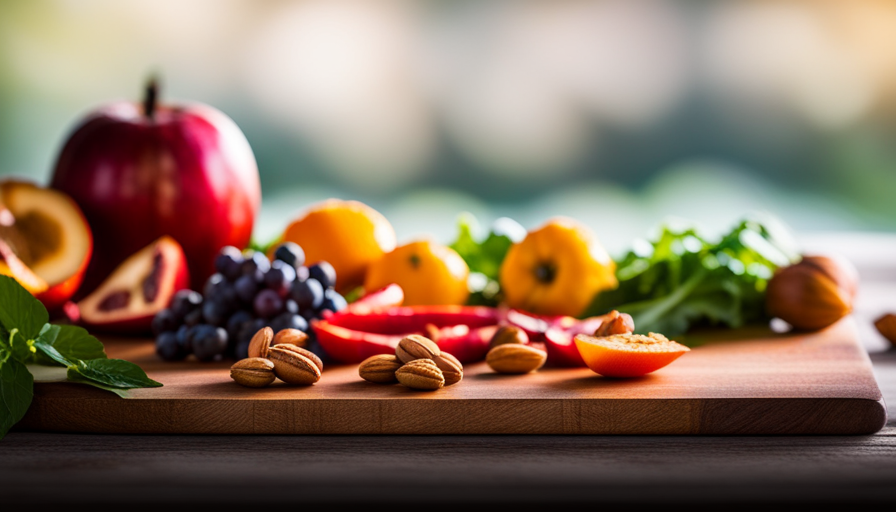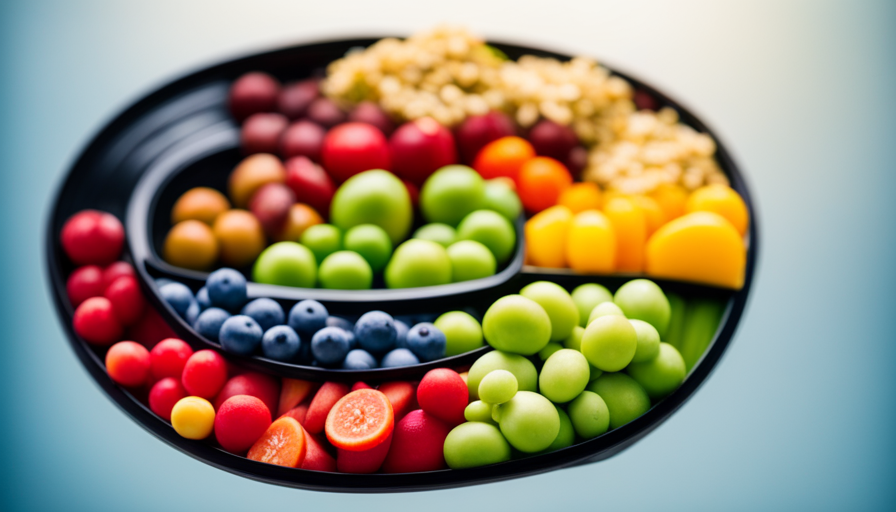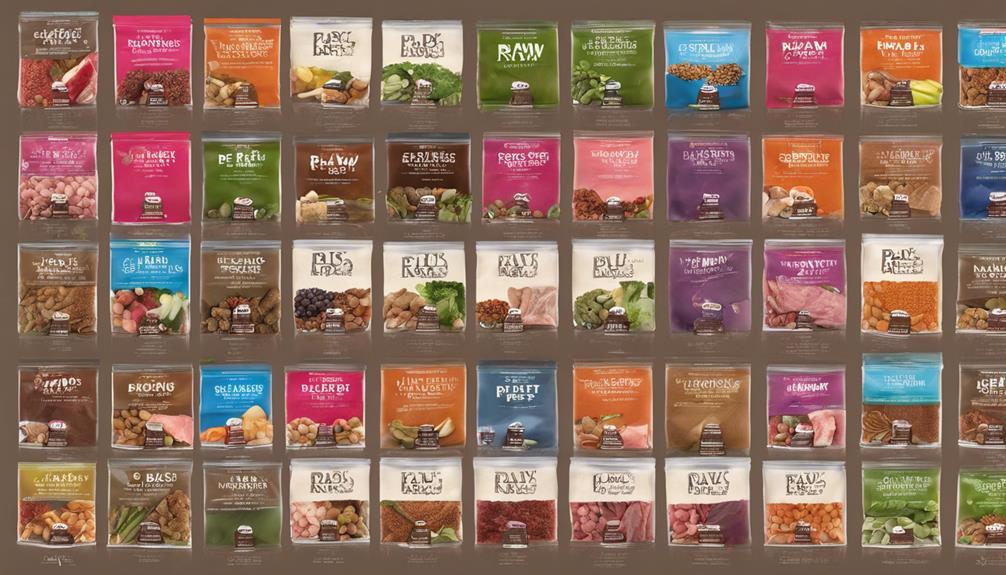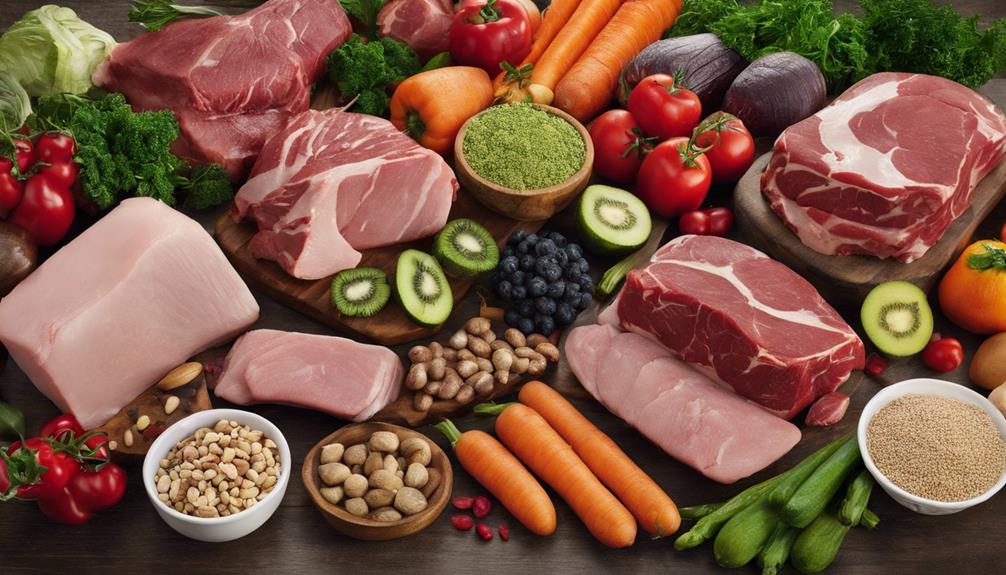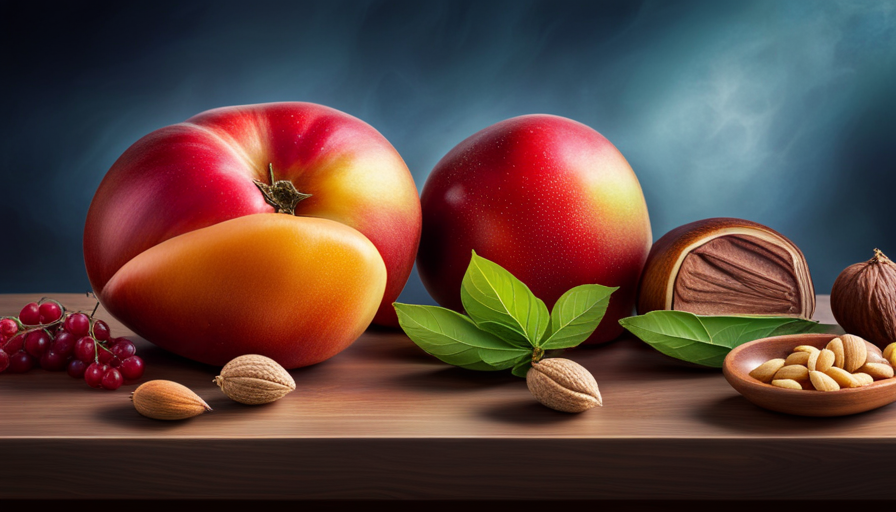In a society where cooking and processed foods have become the standard, there is a community of people who have adopted an alternative approach to eating. They are the trailblazers, the rule breakers, the ones who opt to eat their food in its natural state – raw.
Like a crisp apple plucked straight from the tree or a vibrant salad bursting with color, these people find joy and satisfaction in the simplicity of uncooked meals. Welcome to the world of people who eat raw food, a community that believes in the power of nature’s offerings to fuel their bodies and promote optimal health.
In this article, we will explore the ins and outs of the raw food diet, from its motivations and types of foods consumed, to the potential benefits and challenges one may encounter on this path. So, if you’ve ever pondered the idea of embracing a raw food lifestyle, read on to discover if it may be the right choice for you.
Key Takeaways
- The raw food diet is based on consuming food in its purest form, which is believed to contain higher levels of nutrients.
- Raw foods are generally low in calories and high in fiber, making them beneficial for weight management and digestion.
- Incorporating raw foods into the diet can improve the health and appearance of the skin by aiding digestion, reducing inflammation, and providing natural moisture.
- It is important to handle and prepare raw foods properly, obtain nutrients from alternative sources, and monitor nutrient levels through regular blood tests when following a raw food diet.
Understanding the Raw Food Diet
Do you want to know how the Raw Food Diet can transform your health and boost your energy levels? Well, let’s start by debunking some common raw food myths.
One myth is that you have to eat all your food completely raw. While some people do follow a 100% raw diet, many others incorporate cooked foods as well. It’s all about finding the balance that works for you.
Transitioning to a raw food diet can be a gradual process. You don’t have to make the switch overnight. Start by incorporating more raw fruits and vegetables into your meals. Replace processed snacks with fresh fruits or raw nuts. Experiment with raw food recipes and find ones that you enjoy. Gradually, you’ll find yourself craving more raw foods and feeling the benefits of this lifestyle.
The Raw Food Diet has been praised for its ability to boost energy levels. Raw foods are packed with essential nutrients and enzymes that are often lost during cooking. These nutrients can help fuel your body and enhance your overall well-being. Plus, the high water content in fruits and vegetables can keep you hydrated and feeling refreshed.
So, if you’re looking for a way to improve your health and increase your energy levels, why not give the Raw Food Diet a try? Start by incorporating more raw foods into your diet and see how it makes you feel. You might be surprised by the positive changes you experience.
Motivations for Eating Raw
Imagine the sheer joy and invigorating rush you’ll experience when you embrace the vibrant allure of a raw lifestyle, driven by the compelling desire to nourish your body in its purest form.
People who eat raw are motivated by various reasons, ranging from health benefits to environmental concerns. One of the key motivations for following a raw food diet is the belief that raw foods contain higher levels of nutrients compared to cooked foods. Raw fruits, vegetables, nuts, and seeds are packed with essential vitamins, minerals, and enzymes that can support optimal health. Additionally, raw food enthusiasts often report increased energy levels and improved digestion.
Another motivation for eating raw is the desire to maintain a healthy weight. Raw foods are generally low in calories and high in fiber, which can help with weight management. By consuming a predominantly raw diet, individuals can avoid processed foods that are typically high in sugars, unhealthy fats, and additives.
Moreover, some people choose to eat raw for ethical reasons. They believe that a raw food diet aligns with their values of sustainability and animal welfare. By consuming raw plant-based foods, they reduce their carbon footprint and minimize their impact on the environment.
The motivations for eating raw are diverse and encompass health benefits, weight management, and ethical considerations. By embracing a raw lifestyle, individuals can nourish their bodies with nutrient-dense foods and contribute to a more sustainable world.
Types of Raw Foods
Indulge in the tantalizing array of vibrant, uncooked delicacies that the raw lifestyle offers, from crisp, juicy fruits to crunchy, nutrient-rich vegetables. Eating raw foods doesn’t have to be a monotonous experience. In fact, there’s a wide variety of options available to satisfy your taste buds and nourish your body.
Here are some types of raw foods that you can explore:
-
Smoothie bowls: These colorful and refreshing bowls are made with blended fruits and topped with a variety of toppings like nuts, seeds, and fresh berries.
-
Zucchini noodles: Also known as ‘zoodles,’ these noodles are made by spiralizing zucchini and can be served with a variety of sauces and toppings.
-
Raw sushi rolls: Made with thinly sliced vegetables, seaweed, and a flavorful dipping sauce, these rolls provide a nutritious and satisfying alternative to traditional sushi.
-
Raw desserts: From decadent chocolate avocado mousse to creamy coconut cashew cheesecake, there are plenty of raw desserts that are both delicious and good for you.
In addition to the diverse range of raw dishes you can prepare at home, there are also raw food restaurants that specialize in serving uncooked meals. These establishments offer a variety of creative and flavorful options for those who follow a raw food diet.
Furthermore, incorporating raw foods into your diet can have numerous benefits for your skin. Raw fruits and vegetables are packed with vitamins, minerals, and antioxidants that can help improve the health and appearance of your skin. They can promote a natural glow, reduce inflammation, and enhance hydration, making your skin look radiant and youthful.
The world of raw food is full of exciting possibilities. Whether you choose to explore raw food restaurants or experiment with raw recipes at home, incorporating raw foods into your diet can provide a wealth of benefits for your overall well-being, including the health and appearance of your skin.
Health Benefits of a Raw Food Lifestyle
Incorporating a raw food lifestyle into your diet can provide numerous health benefits, such as improved digestion, increased energy levels, and enhanced nutrient absorption.
One of the key advantages of a raw food diet is its potential for weight loss. Raw foods are typically low in calories and high in fiber, which can help you feel fuller for longer and reduce overall calorie intake.
Additionally, raw foods are often packed with essential nutrients and enzymes that can support optimal digestion. When food is cooked, some of these enzymes are destroyed, making it harder for your body to break down and absorb nutrients. By eating raw foods, you can maximize the availability of these enzymes, leading to improved digestion and nutrient absorption.
Raw foods are also rich in dietary fiber, which can aid in regular bowel movements and prevent constipation. The high water content in raw fruits and vegetables can further promote healthy digestion.
So, if you’re looking to shed some pounds and improve your digestive health, incorporating raw foods into your diet may be a great option for you.
Potential Nutritional Concerns
Be cautious of potential nutritional deficiencies when following a raw food lifestyle, as it may require careful planning to ensure you’re getting all the essential nutrients your body needs. While a raw food diet can provide numerous health benefits, it is important to be aware of the potential risks and take steps to mitigate them.
One of the main concerns with a raw food diet is the risk of foodborne illnesses. Raw foods, especially animal products like meat, eggs, and dairy, can harbor harmful bacteria such as Salmonella or E. coli. To minimize this risk, it’s crucial to handle and prepare raw foods properly, including thorough washing, avoiding cross-contamination, and consuming only fresh and high-quality ingredients.
Another potential concern is the possibility of nutrient deficiencies. Raw food diets often eliminate or limit certain food groups, such as grains, legumes, and cooked foods, which can be important sources of nutrients like iron, calcium, and vitamin B12. It’s essential to ensure you are obtaining these nutrients from alternative sources, such as leafy greens, nuts, seeds, and fortified foods or supplements. Regular monitoring of nutrient levels through blood tests can help identify any deficiencies and guide dietary adjustments.
While a raw food lifestyle can offer many health benefits, it’s important to be mindful of potential food safety risks and nutrient deficiencies. By practicing proper food handling and planning a well-balanced diet, you can enjoy the advantages of a raw food lifestyle while minimizing any potential drawbacks.
Incorporating Raw Foods into Your Diet
Discover the vibrant and revitalizing benefits of adding fresh, unprocessed ingredients to your daily meals. Incorporating raw foods into your diet can provide you with a plethora of health benefits.
Raw food documentaries, such as ‘Food Matters’ and ‘Forks Over Knives,’ can offer valuable insights into the advantages of consuming raw foods. These documentaries showcase real-life success stories and scientific evidence that support the positive impact of raw food on overall health and well-being.
In addition to documentaries, you can also explore raw food restaurants in your area. These establishments offer a variety of delicious and nutritious dishes that are made entirely from raw, unprocessed ingredients. They provide an excellent opportunity to experience the flavors and textures of raw foods prepared by professional chefs. Trying out different dishes at raw food restaurants can inspire you to incorporate similar recipes into your own meals at home.
Incorporating raw foods into your diet can be as simple as adding more fruits, vegetables, and nuts to your meals. You can start by including a fresh salad with every meal or enjoying a nutrient-packed smoothie as a snack. Gradually increasing the amount of raw foods in your diet can help you reap the benefits of their natural enzymes, vitamins, and minerals.
Remember, the key is to focus on fresh, unprocessed ingredients and to listen to your body’s needs. By incorporating raw foods into your diet, you can enhance your overall health and well-being.
Raw Food Recipes and Meal Ideas
Indulge in the tantalizing flavors and nourishing goodness of nature’s bounty with these delectable recipes and meal ideas that embrace the essence of unprocessed ingredients. Raw food desserts offer a guilt-free way to satisfy your sweet tooth while reaping the benefits of raw food. These desserts are made from fresh fruits, nuts, and seeds, providing a rich source of vitamins, minerals, and antioxidants. From creamy coconut mango tarts to chocolate avocado mousse, these raw food desserts are not only delicious but also packed with nutrients that can benefit your skin.
In addition to satisfying your sweet cravings, incorporating raw food into your diet can also have numerous benefits for your skin. Raw foods are rich in enzymes that aid in digestion and promote healthy skin. They are also abundant in antioxidants, which can help fight free radicals and reduce inflammation, leading to a clearer and more radiant complexion. Raw food also retains more of its natural moisture, which can contribute to hydrated and plump skin. By incorporating more raw foods into your diet and trying these raw food dessert recipes, you can nourish your body from the inside out and enjoy the benefits of glowing, healthy skin.
| Recipe Name | Ingredients | Preparation Time |
|---|---|---|
| Coconut Mango Tart | Coconut flakes, almonds, dates, mango, coconut milk | 20 minutes |
| Chocolate Avocado Mousse | Avocado, cocoa powder, maple syrup, almond milk | 10 minutes |
| Raspberry Chia Pudding | Chia seeds, almond milk, raspberries, honey | 5 minutes |
| Raw Berry Cheesecake | Cashews, almonds, dates, mixed berries, coconut oil | 30 minutes |
Challenges and Tips for Eating Raw
Tackling the obstacles and mastering the art of incorporating unprocessed ingredients into your daily meals can be a game-changer for your overall health and well-being. However, transitioning to a raw food diet comes with its own set of challenges.
One of the main challenges is the lack of variety in raw food options. It can be difficult to find interesting and satisfying meals that don’t involve cooking. To overcome this challenge, it’s important to experiment with different raw food recipes and meal ideas. Try incorporating a variety of fruits, vegetables, nuts, and seeds into your diet to ensure you’re getting a wide range of nutrients.
Another challenge of eating raw is the preparation time. Raw food often requires more time to prepare compared to cooked meals. To save time, consider meal prepping and planning your meals in advance. You can also invest in kitchen gadgets like a food processor or dehydrator to make the preparation process easier and more efficient.
When it comes to tips for eating raw, it’s important to listen to your body and make sure you’re getting all the necessary nutrients. Raw food diets can sometimes lack certain essential nutrients like protein and vitamin B12. To ensure you’re meeting your nutritional needs, consider incorporating plant-based protein sources like legumes and seeds into your meals, and consider taking supplements if needed.
While there are challenges to eating raw, with proper planning, preparation, and awareness of your nutritional needs, it is possible to thrive on a raw food diet. Incorporating raw, unprocessed ingredients into your meals can have a positive impact on your overall health and well-being.
Raw Food Community and Resources
Now that you’ve learned about the challenges and tips for eating raw, let’s explore the vibrant raw food community and the resources available to support your journey. Engaging with the raw food community can provide inspiration, guidance, and a sense of belonging.
Here are three exciting aspects of the raw food community and resources that you can explore:
-
Raw Food Events: Attending raw food events can be a fantastic way to connect with like-minded individuals and learn from experienced raw food enthusiasts. These events often feature workshops, demonstrations, and opportunities to try delicious raw food recipes. You can find raw food events through online communities, social media groups, or local health food stores.
-
Raw Food Documentaries: Documentaries are a powerful tool for understanding the benefits and challenges of a raw food lifestyle. They provide valuable insights, success stories, and scientific evidence. Some popular raw food documentaries include ‘Simply Raw: Reversing Diabetes in 30 Days’ and ‘Supercharge Me! 30 Days Raw.’
-
Online Communities: Joining online communities allows you to connect with a global network of raw food enthusiasts. These communities offer support, recipe ideas, and a platform to share your own experiences. Websites like rawfoodtalk.com and rawfoodrecipes.com are excellent resources to start with.
Exploring these resources will not only enhance your knowledge about the raw food lifestyle but also provide you with a supportive community to motivate and inspire you on your journey.
Conclusion: Is a Raw Food Diet Right for You?
Considering the potential health benefits and the growing popularity of the raw food diet, it’s worth noting that a recent study found that individuals who followed a predominantly raw food diet experienced a significant decrease in their overall body mass index (BMI). This suggests that raw food could be a viable option for those looking to manage their weight.
One of the main arguments for raw food is that it retains more nutrients compared to cooked food. When food is cooked, it can lose some of its vitamins and minerals due to the heat. Raw food enthusiasts believe that by eating food in its natural state, they’re getting the maximum nutritional value from it.
Many famous people have embraced the raw food diet, further adding to its appeal. Stars like Gwyneth Paltrow and Woody Harrelson are known to follow a raw food lifestyle. Their endorsement has helped raise awareness about the diet and its potential benefits.
However, it’s important to note that a raw food diet may not be suitable for everyone. Some people may find it difficult to adhere to, as it requires careful meal planning and preparation. Additionally, certain foods are best consumed cooked for better digestion and absorption of nutrients.
The raw food diet offers potential health benefits, including weight management and increased nutrient intake. However, it’s essential to consider individual preferences and dietary needs before adopting this lifestyle. Consulting with a healthcare professional or nutritionist can provide personalized guidance on whether a raw food diet is right for you.
Frequently Asked Questions
What are the potential risks and side effects of following a raw food diet?
Following a raw food diet may have potential risks and side effects. These can include nutrient deficiencies, especially in vitamin B12, iron, and calcium. Raw food may also be harder to digest, leading to digestive issues like bloating and gas.
It’s important to note that long-term sustainability of a raw food diet is still debated among experts. While it may offer potential health benefits such as weight loss and increased nutrient intake, it’s crucial to carefully plan and monitor nutrient intake to ensure overall health and well-being.
How can I ensure that I am getting enough protein and essential nutrients on a raw food diet?
To ensure you’re getting enough protein and essential nutrients on a raw food diet, focus on protein sources like nuts, seeds, and legumes. These nutrient-rich foods provide the necessary amino acids your body needs.
Additionally, incorporate a variety of fruits and vegetables to meet your vitamin and mineral requirements. Remember to include foods like quinoa, tempeh, and spirulina, which are complete protein sources.
By diversifying your diet, you can maintain a balanced and nourishing raw food lifestyle.
Are there any specific food safety precautions I need to take when consuming raw foods?
When consuming raw foods, it’s important to take certain food safety precautions to prevent illness. The risk of bacterial contamination is higher with raw foods, so make sure to thoroughly wash all fruits and vegetables before consuming them.
Additionally, keep raw meats and seafood separate from other foods to avoid cross-contamination. Proper storage and refrigeration are crucial to maintaining the freshness and safety of raw foods.
Following these precautions can help ensure a safe raw food consumption experience.
Can I still enjoy cooked foods occasionally while following a raw food diet?
Yes, you can still enjoy cooked foods occasionally while following a raw food diet. While the main focus of a raw food diet is consuming unprocessed and uncooked foods, it doesn’t mean you can’t have cooked foods at all. It’s about finding a balance that works for you. Cooked foods can provide variety and warmth to your diet, but it’s important to make healthy choices and ensure they don’t compromise the overall nutritional benefits of your raw food diet.
Are there any specific considerations for children or pregnant women who want to follow a raw food diet?
If you’re considering a raw food diet for your child or if you’re pregnant and interested in following one, there are a few important considerations to keep in mind.
Children on a raw food diet may have specific nutritional needs that need to be met to support their growth and development.
Pregnant women on a raw food diet should ensure they’re getting enough essential nutrients for both themselves and their baby.
It’s crucial to consult with a healthcare professional for guidance and support.
What Are Some Common Raw Foods Consumed in Japan?
The Japanese raw food diet typically includes fresh seafood like sashimi, seaweed salad, and pickled vegetables such as tsukemono. Other common raw foods consumed in Japan include tofu, fermented soybeans, and fresh fruits like persimmons and melons. This diet emphasizes natural, unprocessed ingredients for a healthy lifestyle.
Conclusion
In conclusion, exploring the world of raw food can be like embarking on a journey of self-discovery. By embracing the simplicity and purity of nature’s bounty, you’re symbolically stripping away the layers of processed foods and reconnecting with your primal instincts.
While there are potential nutritional concerns to consider, the evidence-based health benefits can’t be ignored. With a variety of raw food recipes and a supportive community, you’ve got all the resources you need to embark on this transformative lifestyle.
So, is a raw food diet right for you? Only you can decide.

